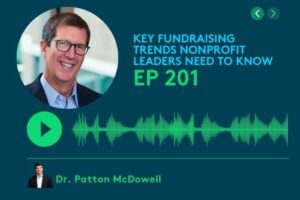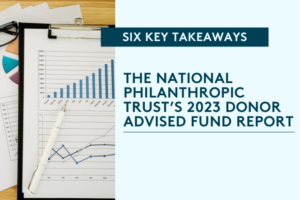Global Giving: Six Tips and Takeaways to Promote International Support

September 7, 2023 | 5 min read
International giving has changed a lot over the past few years. In the past, it was up to the individual donor to determine if a nonprofit was reputable before making a charitable contribution. Today, millions of nonprofits globally adhere to different standards and requirements based on their location. To help prevent fraud and ensure donations go to charitable causes, The Blackbaud Giving Fund partners with local organizations to identify nonprofits that adhere to guidelines that equate to the U.S. 501 (C) (3) standards. These partnerships help ensure nonprofits are legitimate organizations so potential donors have peace of mind knowing they are supporting a good cause.
We spoke with Marcus Becker, director of Haus des Stiftens, Shannon Craig, vice president of marketing at CanadaHelps, and Ingrid Embree, managing director of GlobalGiving, to learn more about the global vetting process, safety and efficiency standards, and how to establish relationships to garner international support for your nonprofit.
Read on for six key takeaways from the webinar, and click here [link to webinar] to listen to the complete discussion.
- Each country has different standards.
While the United States relies on the IRS to identify nonprofits in good standing, other countries utilize different methods to determine a nonprofit’s standing. In Germany, for example, nonprofits have a standard similar to the U.S. 501 (C) (3), but looks beyond that baseline standard. Companies that determine a nonprofit’s standing look to enrich the base level of data with additional data points, mission statements, projects, etc., to provide a clear picture of the nonprofit. With this, they offer peace of mind for individual and corporate donors and create more efficient and robust donation platforms. (Timestamp: 6:00) - How standards exist across a wide range of jurisdictions
When vetting nonprofits in other countries, teams focus on specific pillars to identify their status. Taking into account factors such as compliance, fiscal responsibility, reputation, and implementation are important factors that tie into local and international laws and regulations. Some organizations look into governance structures, conduct audits, or run risk assessments to ensure nonprofits meet specific geographical standards. (Timestamp: 8:26) - Handling global disbursements
The Blackbaud Giving Fund takes the utmost care in safely delivering funds from donors to nonprofits, no matter where the donation originated or its destination. Our global partners have teams that are dedicated to ensuring nonprofits have taken the required steps to receive disbursements from other countries. They identify legal requirements, relevant bank forms, and currency exchanges to ensure the nonprofit receives the donation as soon as possible so it can make the most significant impact in its community. The team continuously works to simplify processes to ensure nonprofits become vetted and receive donations from international supporters. (Timestamp: 9:46) - Establishing relationships to offer support and resources
There are global teams dedicated to establishing and maintaining relationships with nonprofits to understand their current projects, upcoming events, initiatives, ask for advice, offer counsel, and more. These relationships paint a better picture of the communities and offer support and partnerships to help their organization thrive. Having relationships with nonprofits and understanding their needs and what they are working on can help organizations become better equipped to offer critical support. (Timestamp: 13:17) - Highlighting initiatives to inspire donors
Establishing engagement initiatives to inspire donors to give can be a valuable resource that global partners can offer nonprofits. The organization can identify causes or nonprofits related to the donor’s interest or giving behavior, including the cause they support, geographic location, events, etc. With a group actively identifying events or areas in need, an organization can leverage its data, mailing list, and engagement team to inform relevant supporters how to support issues in their communities, how to respond, and ways to help. (Timestamp: 16:10) - How to activate during crises
When an urgent need or a crisis occurs, donors want to offer support but may not know how. There are organizations managing landing pages, email campaigns, and social media channels that highlight current crises and identify the nonprofits that are responding. By leveraging relationships with nonprofits to ensure they share accurate information, companies can show donors what is being done to address the circumstances and how they can offer their support. Preparation is key. If a nonprofit has a portfolio of emergency responses and plans, it will be better equipped to respond quickly to crises if they occur. (Timestamp: 21:31)
Global giving can be an important part of a nonprofit’s success, especially when the community they support is in urgent need and attracting international attention. Having relationships with global partners can help nonprofits connect with valuable supporters outside their home country to help ensure their mission is shared and elevated with key donors.
Watch the original recording of the webinar here.
To learn more about The Blackbaud Giving Fund, visit blackbaudgivingfund.org, or follow the organization on LinkedIn, Facebook, and Instagram for updates, news, and more.
For more information about NPOconnect or to sign up, visit https://nonprofit.yourcause.com/login/create-account.


